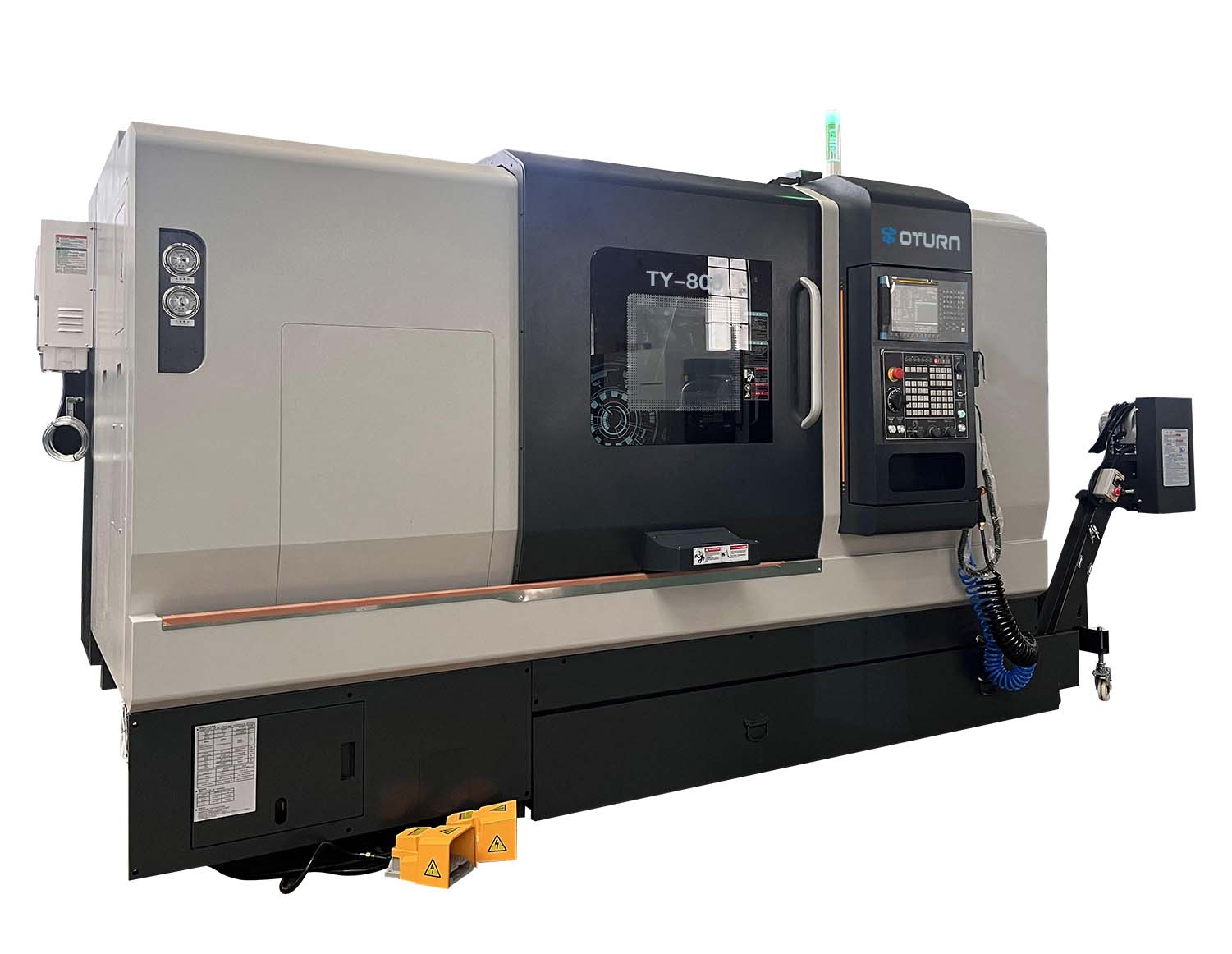Introduction
Slant bed CNC lathes, characterized by their inclined bed design, are essential tools in precision machining. Typically set at a 30° or 45° angle, this design promotes compactness, high rigidity, and excellent vibration resistance. The linear slant bed enables smooth tool rest movement, effectively addressing issues related to tensile strength and rigidity often seen in traditional linear beds.
Applications in Industry
Due to their precision, speed, stability, and efficiency, slant CNC lathes are widely utilized across various industries, including aerospace, automotive, mold manufacturing, rail transit, and shipbuilding. In these sectors, they provide indispensable technical support and production reliability, facilitating advancements in modern manufacturing processes.
Operating Procedures
1.Preparatory Work
Equipment Inspection: Conduct a thorough inspection of the lathe, ensuring that safety devices (e.g., emergency stop switches, guardrails) and key components (numerical control system, spindle, turret) are functioning correctly. Verify that coolant and lubricant supplies are adequate.
Workpiece and Tool Preparation: Select appropriate materials and perform any necessary pre-treatment or rough machining. Prepare the corresponding tools and fixtures, ensuring they are adjusted and calibrated.
2.Program Setting
Machining Program Design: Transform the part drawing into a machining program within the numerical control system. Validate the program through simulation to confirm its accuracy and efficiency.
Loading the Program: Load the selected program into the system, checking for correctness. Set relevant parameters, including the workpiece dimensions and material, and transmit the program information to the machine.
3.Clamping the Workpiece
Fixture Selection: Choose appropriate fixtures based on the workpiece's shape and requirements, ensuring secure clamping to prevent any movement during machining.
Fixture Position Adjustment: Adjust the position and clamping force of the fixture to guarantee stability and safety throughout the machining process.
4.Machine Tool Operation
Starting the Machine: Initiate the machining process via the numerical control system, adhering to the established program. Monitor the operation closely, making timely adjustments to machining parameters and tool positions as needed to maintain precision and quality.
5.Inspection and Maintenance
Machining Result Evaluation: After machining, inspect and test the results to ensure compliance with technical specifications and part drawings.
Equipment Cleaning and Maintenance: Regularly clean the equipment and perform necessary maintenance to prolong its lifespan and ensure optimal performance.
Slant CNC lathes are vital for high-precision machining across various industries. Understanding their operation, from preparatory steps to maintenance, is crucial for maximizing efficiency and maintaining product quality.

Post time: Nov-01-2024






